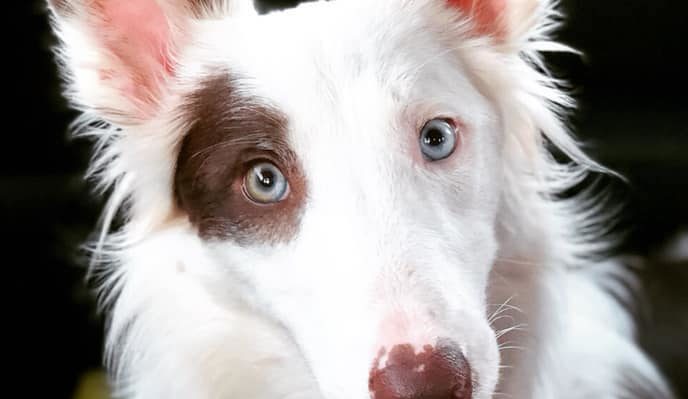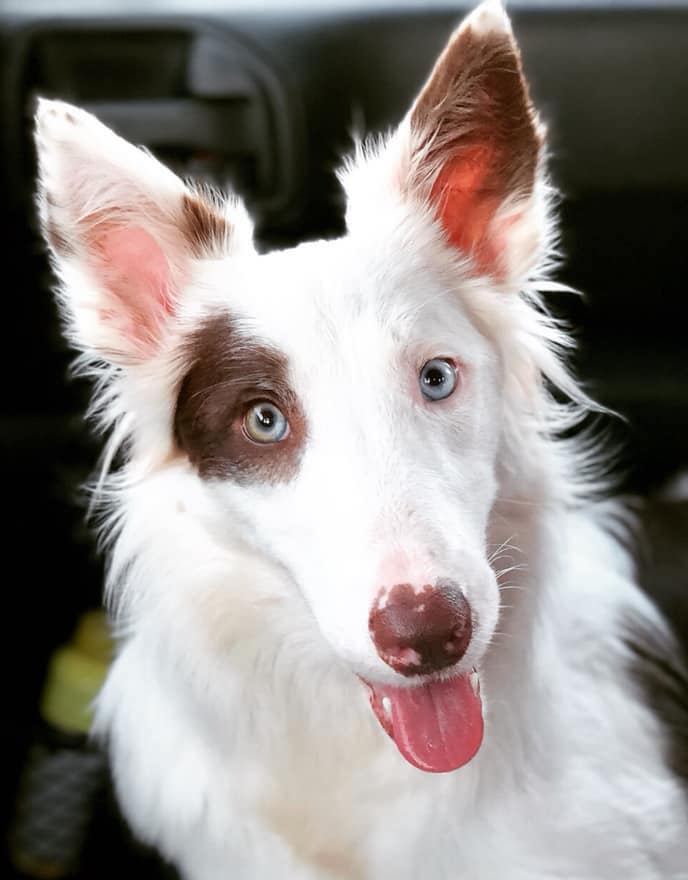
It’s almost time for fireworks! Thunderstorms are also due.
You’re thinking about your dog, aren’t you? Your dog is afraid of loud sounds like fireworks and thunderstorms. You’re anticipating more scary experiences for your canine family member soon as spring weather and summer celebrations start up again. You’re concerned—what to do? You want this year to be different, for your dog and for your family.
You decide to look online for possible solutions. You watch some videos, you read some advertising, you consider some suggestions.
Now you’re now even more confused! There’s too much information.
You need to know where to start.
First, Visit Your Veterinarian
When you’re dealing with a behavior issue, that’s where you start, every single time.
▪ Make an appointment, rather than attending a walk-in open clinic. Tell the staffer scheduling your appointment exactly what you want to discuss.
▪ Make a written list of your specific questions.
▪ E-mail that list to your veterinarian several days before your visit.
▪ Bring your copy and a notepad to your appointment.
▪ Ask a friend or family member to come along for support.
Is there a physical problem?
Your veterinarian will discuss any particular issues found during the examination of your dog. Tests may be suggested. If so, you’ll have to wait for the results, then follow up with your veterinarian for treatment.
Is medication worth trying?
Your veterinarian may suggest a medication that might be effective in minimizing your dog’s discomfort with loud sounds. Your dog may be prescribed enough of the medication to give you a chance to observe how it works—and to see its side effects—in a controlled situation.
What else can help?
In addition to making sure any physical problem is diagnosed and treated, and as support for any prescribed medications, consider other strategies that seem to have worked for many, including wearables like the Thundershirt products (snug-fitting body wrappers), TTouch treatments, and pheromone diffusers that promote calm. Online reviews and videos will tell you what’s available. I strongly suggest purchasing from suppliers with an excellent return policy and a good reputation.
See what works.
▪ Your own observations are critical in determining which solutions are working for your dog.
▪ Keep an informal log of notes on what you’ve tried and how it’s worked. That’s especially important if you’re consulting with a veterinarian or veterinary behaviorist to find the right medication and dosage for your dog.
▪ Take videos with your phone of your dog’s reactions. (Broadcast quality isn’t necessary. Use the technology you have to give the fullest picture possible.)

Photo by Kelli-ann Reilly
You’re going to make a plan to deal with your dog’s fears.
You’ll set up what you hope will be a calming atmosphere.
You want your dog to feel as safe as is caninely possible.
Will comforting your dog “reinforce” the fear?
No, comfort doesn’t make the dog fear more.
Comfort Your Dog, If Your Dog Seeks Comfort
Why is it so important that you understand it’s okay to comfort your frightened dog? It’s important because so much misinformation is out there, you might think that comforting your dog will only make him more fearful. You might think that comforting “reinforces” the fear. That is simply not true.
This statement was written by a trainer as advice to owners of fearful dogs:
“‘Comforting’ a dog that is reacting out of anxiety or fear makes it much worse.
“[I]f your dog is bolting for their life and you share softness, it doesn’t give the dog any confidence and will make the issue worse when they realize you can’t control your environment either. If I see a coyote and my dog gets scared and I sooth[e] my dog, my dog thinks we are both about to get eaten without controlling my environment first, etc.”
Why is this extremely bad advice?
▪ It’s bad advice because it’s poorly written and unclearly communicated.
▪ It’s bad advice because it’s anecdotal at best, with no support from science whatsoever.
▪ It’s bad advice because it misconstrues so much about dogs and how dogs learn and behave.
▪ It’s bad advice because what it states is simply not true. If you believe it and act on it, you may be doing your dog a great disservice.
I asked dog professionals, “What’s wrong with what this trainer says?”
Beth Fabel (Washington) Anxiety is not a behavior, it’s an emotion, and you are not rewarding it when you comfort your dog. If your dog gets scared because a thing arrived and scared it, and [the thing is] not a real threat (coyote in the distance minding its own business, your dog leashed, for example) and the dog reacts fearfully and you soothe him, he may or may not care . . . but I think it’s a pretty big jump to say he thinks you are both about to get eaten.
Sarah Adams (Oregon) [I]f you soothe your dog when it’s afraid of a coyote, it will think you’re scared, too, and be doubly scared? Not clear how you get that. Unless you think the dog understands English and interprets, “It’s okay” as “I understand your fear, because this is scary”—which is way more language interpretation than I’d attribute to dogs.
Eileen Anderson (Arkansas) What’s she’s suggesting is that the dog also has a theory of mind. “I understand the underlying emotion behind my human’s saying those particular words (that I completely understand) and it means they are affected a certain way and that means I should be affected that way, too.”
Meira Frankl (Quebec) Emotions are involuntary, therefore they cannot be reinforced. This isn’t just an opinion, mine or others’—it’s a scientific fact. The only thing that is ever reinforced is behavior, as behavior is operant.
Want accurate information on the subject instead?
You Can’t Reinforce Fear
A lot of folks worry about comforting their dogs when they are afraid, and are concerned that they will reinforce their dogs’ fears.
That is generally incorrect.
1. Behaviors can be reinforced with operant conditioning.
2. Emotions can’t.
3. Fear is an emotion.
4. If you comfort your fearful dog, it is not likely to “reinforce” the fear and make them more scared next time.
If you want to get really nitpicky, it is possible to reinforce fearful behaviors. But during a noisy holiday is not the time to worry about that! You need to get through the holiday, keeping your dog feeling as safe as possible.
You Can’t Reinforce Fear
Eileen Anderson
https://eileenanddogs.com/cant-reinforce-fear/
These articles address the same subject. Note the authors’ credentials and experience.
You Can’t Reinforce Fear—Dogs And Thunderstorms
Patricia B. McConnell, PhD, CAAB Emeritus
Reinforcing Fear—What’s The Debate?
Pia Silvani, CPDT-KA, CCBC
https://www.piasilvani.com/single-post/2014/09/21/Reinforcing-Fear-Whats-the-Debate
Don’t take advice that’s unsupported, anecdotal, unscientific. Use your own common sense and intelligence to sort out the self-serving myths from the facts.
I say “self-serving” because so often, when we look further into trainers like the one who wrote the example of misinformation I quoted above, we find that the methods they recommend for working with dogs are equally misinformed.
When you’ve done the reading, when you’ve done the research, when you understand the simple science, you’re in a much better position to know how to react when a self-proclaimed dog-training expert tells you something you know to be untrue.
What should you do? I suggest you walk away, figuratively (in an online discussion) or literally (on the phone or in person) . . . for your dog’s sake.
A Plan to Help Your Dog
To find support and guidance for dealing with your dog’s anxiety and fearfulness about fireworks and thunderstorms or other scary occurrences, first visit your veterinarian for a discussion and possible treatment options. Then look locally for a well-qualified trainer or class instructor with an excellent reputation, to ask how he or she might help. (If you’re told something you believe to be untrue, it’s probably best to keep looking for advice that you can trust.)
Your dog’s anxiety is not likely to disappear overnight, no matter what you do—you are in for the long haul. Your plan to reduce your dog’s anxiety is a start. Following through on that plan with patience and flexibility is next. Keep up your own spirits by noting small increments of improvement, of course!
There is no quick fix for a fearful dog. Certainly, punishment is never the answer.
Finding what works to reduce your dog’s anxiety, even just a little at a time, is a long-term goal, one you may work on for the rest of your dog’s life. Using positive, non-punitive methods is the most logical choice, and it’s one that’s supported by science.
Start now and see what you and your dog can accomplish, working together for good!



